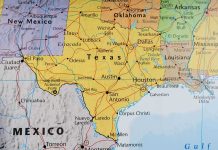
The United States is reviving a 120-year-old doctrine that once justified military interventions across Latin America, and this time it comes with airstrikes, naval blockades, and a declared mission to police the Western Hemisphere.
Quick Take
- Trump’s administration has militarized the Roosevelt Corollary to the Monroe Doctrine, conducting airstrikes in the Caribbean since August 2025 with at least 80 reported deaths
- The doctrine justifies U.S. intervention as necessary to combat drug trafficking, counter Chinese influence, and restore hemispheric order
- Historical precedent shows similar interventionist policies led to decades of regional instability, anti-American sentiment, and erosion of U.S. credibility
- Latin American governments and global powers are protesting the actions, creating diplomatic fallout and potential for proxy conflicts
When History Repeats With Missiles
Theodore Roosevelt declared in 1904 that the United States possessed the right to intervene in Latin American nations suffering from “chronic wrongdoing” or instability, effectively positioning America as the hemisphere’s international police force. That doctrine shaped a century of U.S. military interventions. Now, President Trump has dusted off this framework and given it a 21st-century upgrade, complete with drone strikes and carrier task forces. The parallels are unmistakable, and so are the risks.
The Modern Justification for Hemispheric Control
Trump frames current military operations as responses to transnational drug trafficking networks and the infiltration of Chinese and Russian influence into Latin America. U.S. Navy airstrikes began in August 2025, intensifying through September when the first publicly acknowledged strike targeted a Venezuelan vessel, killing 11. By November, major media outlets were reporting the formalization of what analysts call the “Donroe Doctrine”—a blend of Trump’s name and the Monroe Doctrine’s legacy. The administration presents these actions as defensive measures protecting American security and hemispheric stability.
The Historical Weight of Intervention
The original Monroe Doctrine of 1823 warned European powers away from the Western Hemisphere. Roosevelt’s 1904 corollary transformed that defensive posture into offensive authority. It justified U.S. military occupations in Cuba, Panama, Nicaragua, and the Dominican Republic throughout the 20th century. Each intervention claimed noble purposes—restoring order, combating corruption, preventing external interference. Each left behind resentment, political instability, and strengthened anti-American movements. Historians warn that repeating this pattern risks repeating the same consequences.
The Geopolitical Calculation
China and Russia have expanded their economic and strategic presence across Latin America over the past two decades. Chinese investment flows into infrastructure projects, mining operations, and ports. Russian diplomacy cultivates relationships with anti-American governments. U.S. strategists argue that hemispheric dominance is necessary to prevent rival powers from establishing footholds that could threaten American security. This geopolitical competition provides the strategic logic underlying Trump’s militarized approach, distinguishing it from purely security-focused drug war interventions.
The Contradiction at the Core
Trump’s foreign policy emphasizes American restraint globally and skepticism toward nation-building abroad. Yet his Latin American policy embraces aggressive intervention. This contradiction reveals a hierarchy: the Western Hemisphere occupies a special place in Trump’s strategic vision, one where traditional restraint does not apply. The administration views the region as America’s sphere of influence, not as a collection of sovereign nations entitled to self-determination. This assumption underpins the entire doctrine and explains why military action proceeds with limited diplomatic consultation.
The Regional Resistance
Latin American governments have responded with protests and diplomatic complaints. Even U.S.-aligned nations express concern about unilateral military action within their territories or waters. Anti-American sentiment, already high in many countries, intensifies with each airstrike. China and Russia condemn the interventions as violations of international law and sovereignty. This growing resistance creates diplomatic costs and erodes the soft power that once allowed America to shape the region through persuasion rather than force alone.
What History Suggests Comes Next
Previous U.S. interventions in Latin America followed predictable patterns: initial military success, followed by prolonged instability, radicalization of local populations, and eventual American withdrawal or stalemate. The Bay of Pigs invasion, the support for various Latin American dictatorships during the Cold War, and the decades-long struggle against drug cartels all demonstrate that military force alone rarely achieves lasting political objectives. The current doctrine risks repeating these failures at a moment when American credibility in the region is already strained and alternative powers offer competing visions for Latin America’s future.
Sources:
GZERO Media – A Trump Doctrine of Heavy Footsteps and Many Levers
Carnegie Endowment – Trump, Greenland, Panama Canal, and Monroe Doctrine Policy
Politico – Trump, Venezuela, and the Monroe Doctrine
Evrim Ağacı – Trump Revives Monroe Doctrine With Caribbean Military Surge
Americas Society/Council of the Americas – Trump’s Power Play in Latin America







